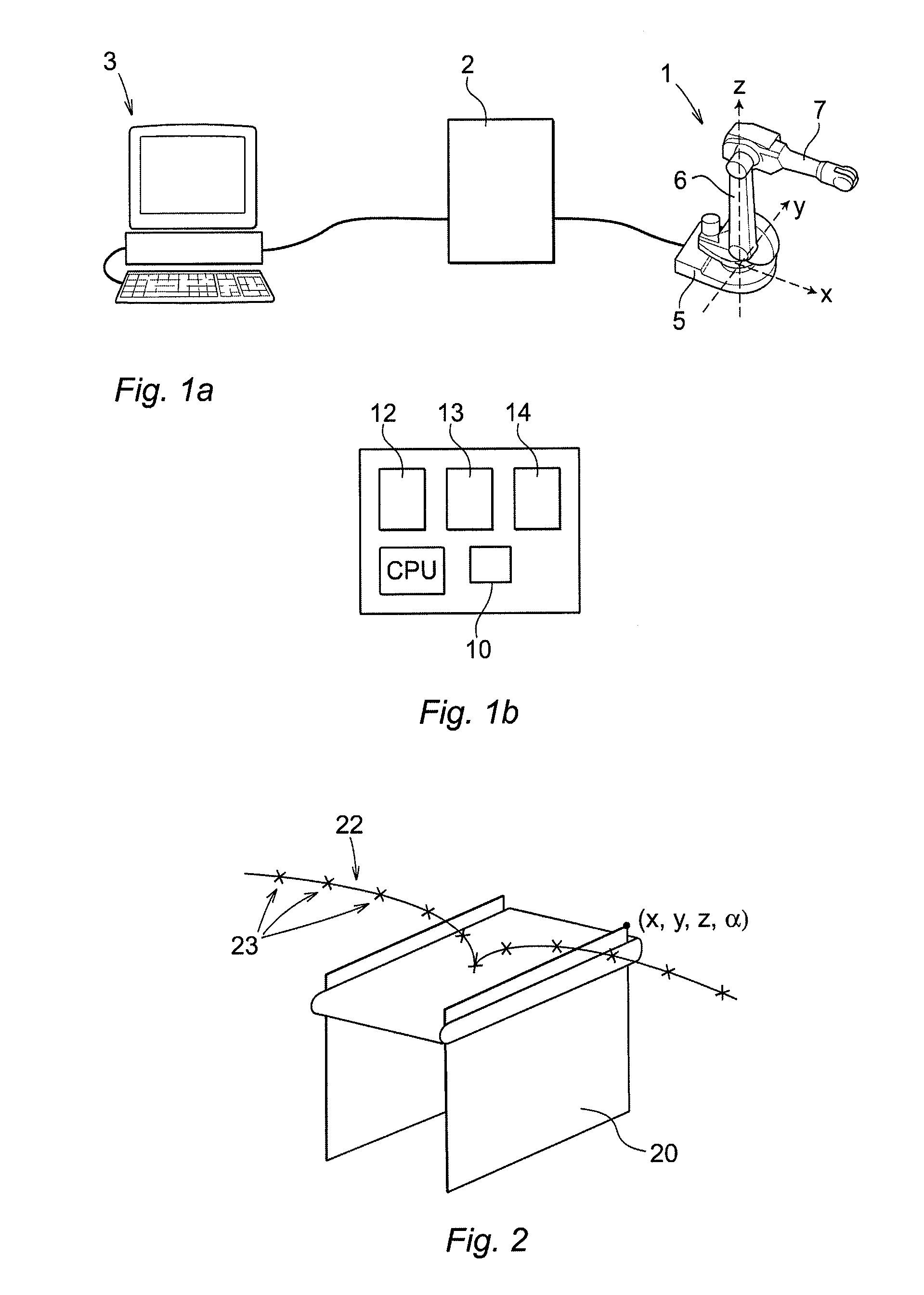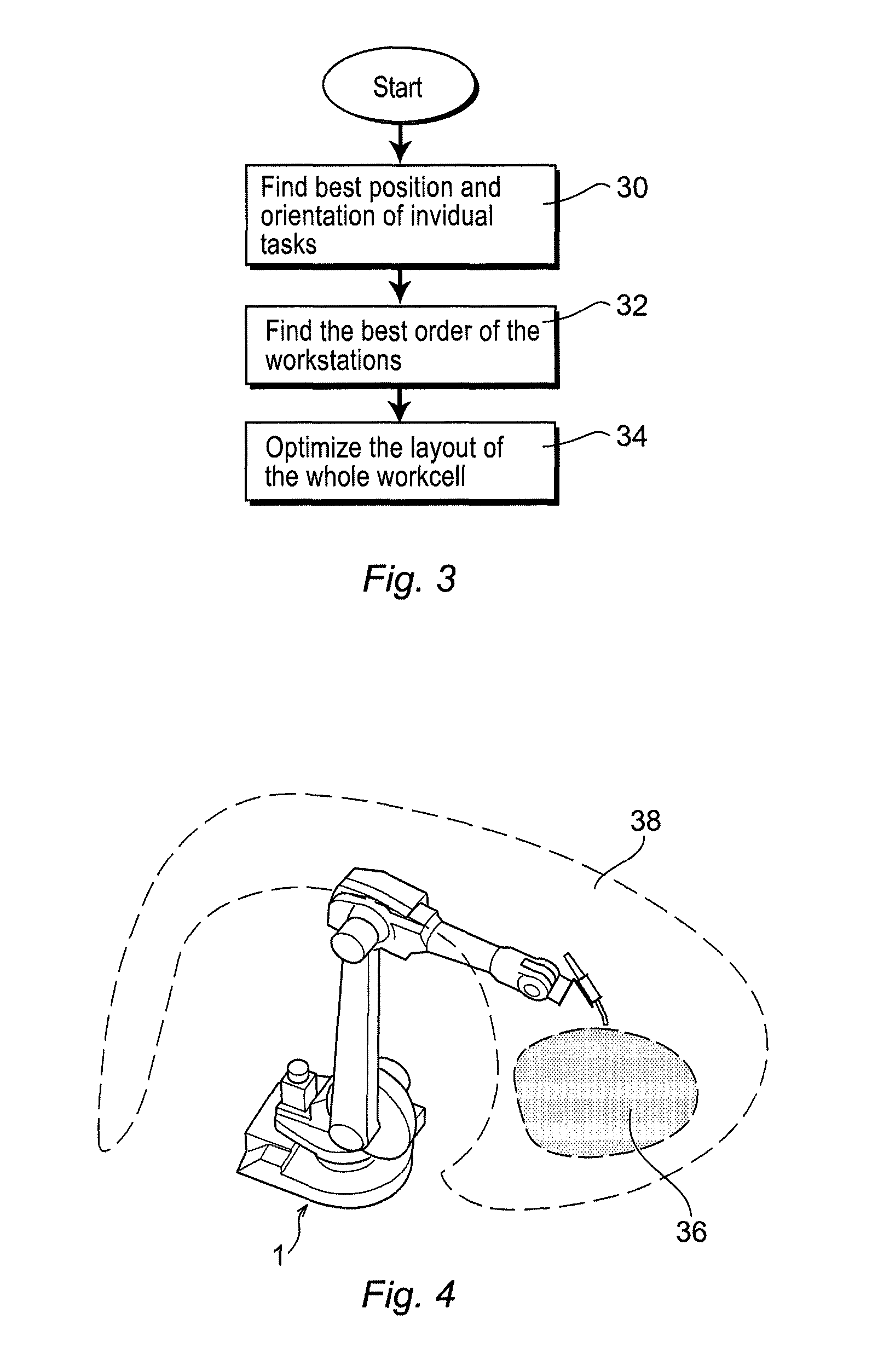Method and system for optimizing the layout of a robot work cell
a robot work cell and layout technology, applied in the field of robot work cell layout optimization, can solve the problems of not being applicable, not being able to guarantee the good position of one workstation, and not being able to guarantee global optimization, so as to improve the performance of the robot and increase the productivity of the robot work cell
- Summary
- Abstract
- Description
- Claims
- Application Information
AI Technical Summary
Benefits of technology
Problems solved by technology
Method used
Image
Examples
Embodiment Construction
[0044]FIG. 1a shows a robot system including a robot 1, a robot controller 2 and an external computer 3 configured to communicate with the robot controller. The robot includes a plurality of robot parts movable relative to each other. The robot parts are in this case a base frame 5, and robot arms 6,7. The base frame 5 of the robot is arranged in a fixed position relative to the ground. A base coordinate system X, Y, Z is defined relative to the base frame of the robot. The robot is rotatable about the base frame in the Z-direction of the base coordinate system of the robot. The robot controller is configured to control the movements of the robot in accordance with a control program including instruction for moving the robot along paths in order to carry out a sequence of tasks on a plurality of workstations. The external computer includes a processor, such as a central processing unit (CPU), memory for storing programs and data, user input means, such as a keyboard and a mouse, com...
PUM
 Login to View More
Login to View More Abstract
Description
Claims
Application Information
 Login to View More
Login to View More - R&D
- Intellectual Property
- Life Sciences
- Materials
- Tech Scout
- Unparalleled Data Quality
- Higher Quality Content
- 60% Fewer Hallucinations
Browse by: Latest US Patents, China's latest patents, Technical Efficacy Thesaurus, Application Domain, Technology Topic, Popular Technical Reports.
© 2025 PatSnap. All rights reserved.Legal|Privacy policy|Modern Slavery Act Transparency Statement|Sitemap|About US| Contact US: help@patsnap.com



